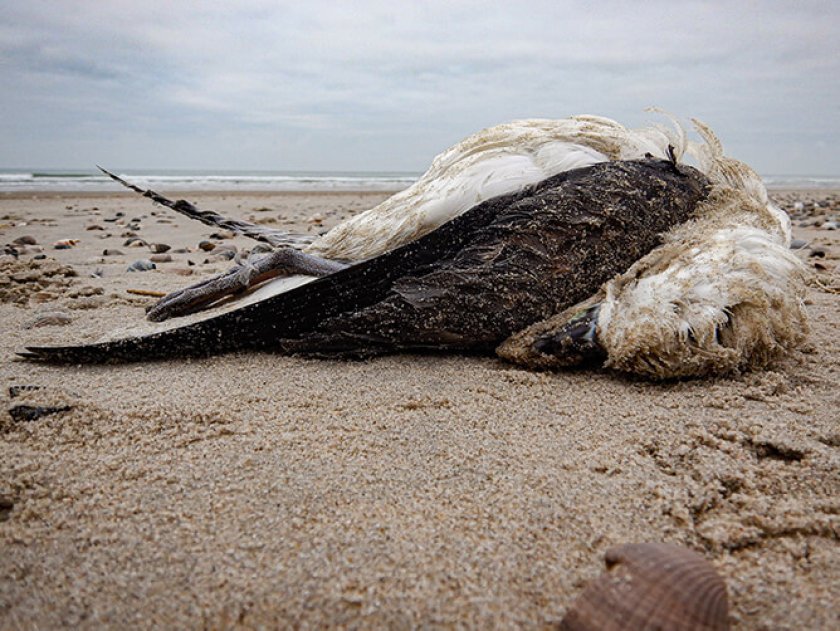
Project
Plastics in the stomachs of fulmars
Fulmars are a suitable indicator species for monitoring plastic in the North Sea. With the help of an extensive network of volunteers, it is possible to demonstrate each year whether policies around plastic are effective. Besides an annual report with the results, a finder's report is also sent to the volunteers. This personal feedback, as part of citizen science, encourages further search and contribution to the monitoring research.
Plastics in petrel stomachs
In 1979, plastic was discovered for the first time in the stomach of a fulmar washed up dead on a Dutch beach. Since then, WUR researchers Jan Andries van Franeker and later Susanne Kühn have been involved in monitoring the amount of plastic in stranded fulmars. Citizen science and the support of a large network of volunteers are essential in this process. Therefore, birds are collected from all over the coast of the Netherlands to be examined in the lab.

The project in brief
Monitoring the amount of plastic in the stomachs of fulmars gives a good indication of the state of the environment. In 2002, the project therefore broadened to a North Sea-wide study. Several countries contribute to collecting information on plastic levels in the North Sea by examining dead, stranded fulmars. The fulmar monitoring method was developed at WUR and is now standardised within the EU context. Research at this level is driven by policy since the monitoring of plastic levels can show whether policies are effective or not. In addition, the emotional connection with animals plays an important role in raising awareness about the consequences of plastic litter and encourages people to contribute.

Collecting dead fulmars is done along the entire Dutch coast, and researchers cannot manage that themselves. All kinds of volunteers regularly visit beaches: for example, beachcombers, people walking dogs, and organisations or others who keep a freezer for freezing the dead animals. The researchers also keep a close eye on waarneming.nl for reports of dead fulmars. People in the network are then asked if they can pick up the bird, or the finder himself is asked to take the animal. Interested people are added to an e-mail list and kept up to date. Some volunteers have thus been involved in the project for over 30 years.
Feedback to volunteers: finder reports

Once taken to a freezer, the story does not end for the volunteers. In fact, finds always come with a label containing information about where the bird was found, when it was discovered, and by whom. Along with an annual report detailing the results of the stomach research, the volunteers also receive a finder's report. In this report, finders are thanked, and details regarding the stomach contents of the birds they found are provided for each volunteer. This feedback personalises each find and encourages volunteers to keep searching.
Results
Today, a threshold has been set by the EU. No more than 10 per cent of fulmars should have more than 0.1 grams of plastic in their stomachs. The percentage of birds with more than 0.1 grams of plastic in their stomachs has been above 50 per cent in recent years. The plastic percentage has dropped over the last 20 years, but there is definitely still work to be done.
Want to help as a volunteer? Then check out the necessary information on how to pick up the fulmars.